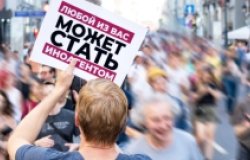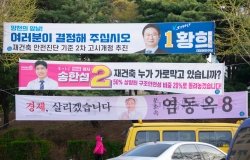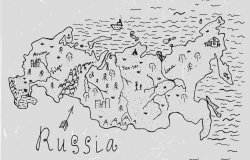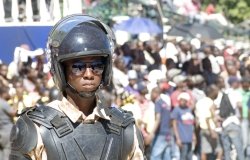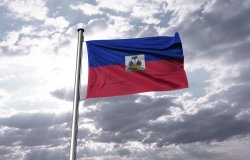Iran: The People and the Regime Miles Apart

Alexandros Michailidis / shutterstock.com
When Iran’s President Ebrahim Raisi chose to attend the opening day of the new academic year at the all-women’s Al- Zahra University on Saturday, October 8 he was expecting to be welcomed by the students. He was welcomed, in what appeared to be a well-planned and choreographed visit, from an auditorium full of young women all wearing the Islamic headdress. But Raisi also encountered a reception he didn’t expect: scores of female students on campus, removing their scarves and with their heads bare, defiantly waving their head-scarves above their heads and crying, “Raisi get lost,” and “We don’t want a corrupt man as our guest.” It was a forceful reminder to him and his supporters in and outside the university of the women’s revolution playing out on the streets of Tehran and other towns and cities across Iran, and of the protestors—women and men, young and old—who face arrest, imprisonment, and even death at the hands of the security forces in an expression of opposition to the regime.
Instead of addressing the anger of the people at the riot police and other units that have been brutally mistreating arrestees... he threw his full support behind the security forces and said they had been treated unfairly.
The protests are now into their fourth week, but a disconnect remains between the regime and the people. The government has neither acknowledged nor seems to understand the roots of the women’s revolution and the deep discontent of the people. When Iran’s Supreme Leader, Ayatollah Khamenei, after a two-week silence, finally addressed the turmoil on the streets it was not to calm the protests or to bridge the anger of the people against an unrepresentative, repressive government. Rather, he condemned the demonstrations as the work of Israel and the US and their paid agents in Iran—an old ploy that no one believes. And instead of addressing the anger of the people at the riot police and other units that have been brutally mistreating arrestees, using live ammunition and killing peaceful demonstrators, he threw his full support behind the security forces and said they had been treated unfairly. A handful of senior clerics in the city of Qum echoed his sentiments. In the past, what leaders in Qum said carried weight, but in this movement it has proven irrelevant. By tacit support for a despised regime through their silence, these once weighty senior ayatollahs have marginalized themselves.
High officials have also echoed Khamenei. The president, the chief of intelligence, the chief of police and the commander of the Revolutionary Guards warned that they were prepared to deal firmly with those they called “rioters.” A rubber-stamp Majlis, or parliament, cheered on the security forces. Tehran’s chief of police assured senior clerics in Qum that the morality police will be back on the streets in November—conveniently ignoring the fact it was the morality police who triggered the current uprising against the regime when they arrested 22-year-old Mahsa Amini on September 13 and beat her into a coma, causing her death.
They and their colleagues in the security services are witnessing a nightmare come true: students and women are on the streets calling for regime change.
The leadership speaks with one voice because the regime is hunkering down; it is determined to crush the protests at all costs. One important reason, I believe, is that they fear a replay of the ‘colored’ revolutions in East Europe that led to the collapse of governments in the countries in the former Soviet bloc. They fear that if the protests and demonstrations are allowed to continue unhindered, they will spread and grow until they overwhelm the regime. When I was arrested and imprisoned in Iran in 2007, it was clear from my extensive interrogations that what my interrogators feared most were that activists or events could snowball into a ‘velvet’ revolution in Iran. My interrogators didn’t want two groups protesting on the streets: women and students. They and their colleagues in the security services are witnessing a nightmare come true: students and women are on the streets calling for regime change. One reason for the large deployment of forces on the streets; thus, the brutal treatment of women and students.
Consider the vicious attack on a peaceful protest by students at Sharif University in Tehran. The university is home to the cream of the crop of students at all Iranian universities, particularly in engineering and the sciences. Its graduates are responsible for much of the highest quality work Iran achieves in the science and technology field. Yet the message to a shocked Iran was that none of this mattered to a regime that feels it is threatened and under siege. A substantial number of Sharif students were arrested, pushed into vans and taken to detention centers; and this scenario has played out on university and college campuses across the country. High school and even middle school students have joined the cry of “death to the dictator,” a slogan that is aimed directly at the Supreme Leader.
Important new groups are joining or at least supporting the protests. On Saturday, for the first time, the Tehran Grand Bazaar closed down in solidarity with the demonstrators, as did most shops in the separate Tajrish Bazaar in north Tehran. The bazaar and shop closures are significant and must have sent shudders down the spine of the government. The merchant and shopkeeper class have close relations with the clergy and in general have been supporters of the regime. Bazaar and shop closures interrupt trade and business and suggest the clerical rulers of Iran could lose what has been an important pillar for the regime. On Monday workers in a number of Petrochemical plants went on strike "in support of their compatriots".
The U. S. can help by facilitating access to the internet and the social media platforms that the Iranian government seeks to block.
Coverage of the protests in Persian press, radio and TV has generally echoed the government line. The country’s two largest newspapers, Kayhan and Ettelaat, continue to refer to the protesters as rioters and the protests as the work of foreign agents. They echo the regime in asserting that Mahsa Aminis died as the result of a heart attack and that other casualties, including Sarina Esmailzadeh and Hadis Najafi died by jumping out from rooftops. They must know well that readers won’t believe these reports, but it is an indication of the extent of government control of the press that they do so. Such reformist papers that still exist, such as Etemad, while covering what goes on the streets only sparingly, have urged dialogue between the government and the demonstrators and urge the government to address the grievances of the younger generation. The state media, radio and TV, no longer have credibility. That is why the people turn to the internet, social media, and foreign radio broadcasts for the news. The U. S. can help by facilitating access to the internet and the social media platforms that the Iranian government seeks to block.
The events of the last three weeks underline that we have in Iran a regime and a society that no longer have anything in common. Iran’s current leaders rule by force; as in all dictatorships, government claims and declarations are half-truths, if not outright lies; corruption is endemic. Among the many slogans of the protesters one said, “This is no longer a protest, it is revolution.” We’re not there yet; but the next days and weeks will tell whether the protests spread and are sustained. What is clear is that a large number of Iranians are saying they’ve had enough.
The views expressed in these articles are those of the author and do not reflect an official position of the Wilson Center.
About the Author


Middle East Program
The Wilson Center’s Middle East Program serves as a crucial resource for the policymaking community and beyond, providing analyses and research that helps inform US foreign policymaking, stimulates public debate, and expands knowledge about issues in the wider Middle East and North Africa (MENA) region. Read more

Middle East Women's Initiative
The Middle East Women's Initiative (MEWI) promotes the empowerment of women in the region through an open and inclusive dialogue with women leaders from the Middle East and continuous research. Read more



